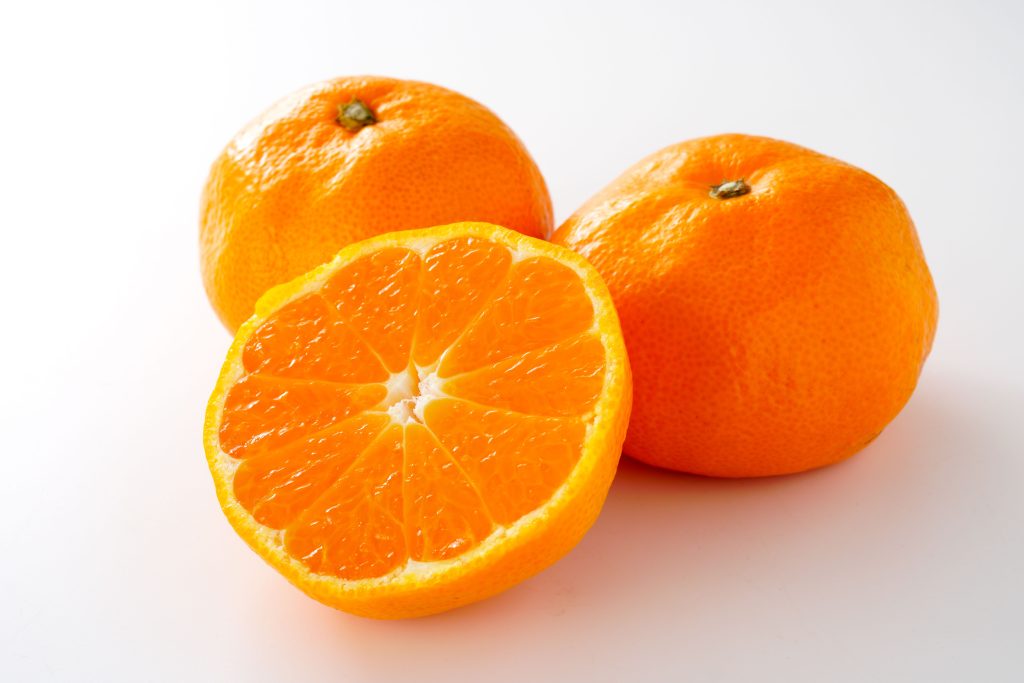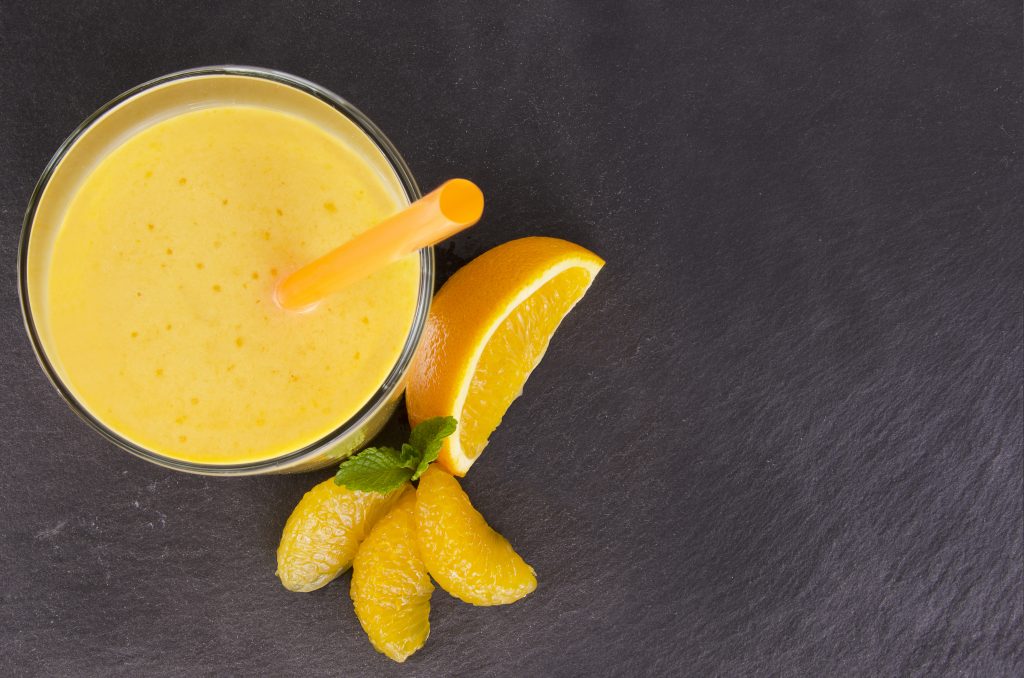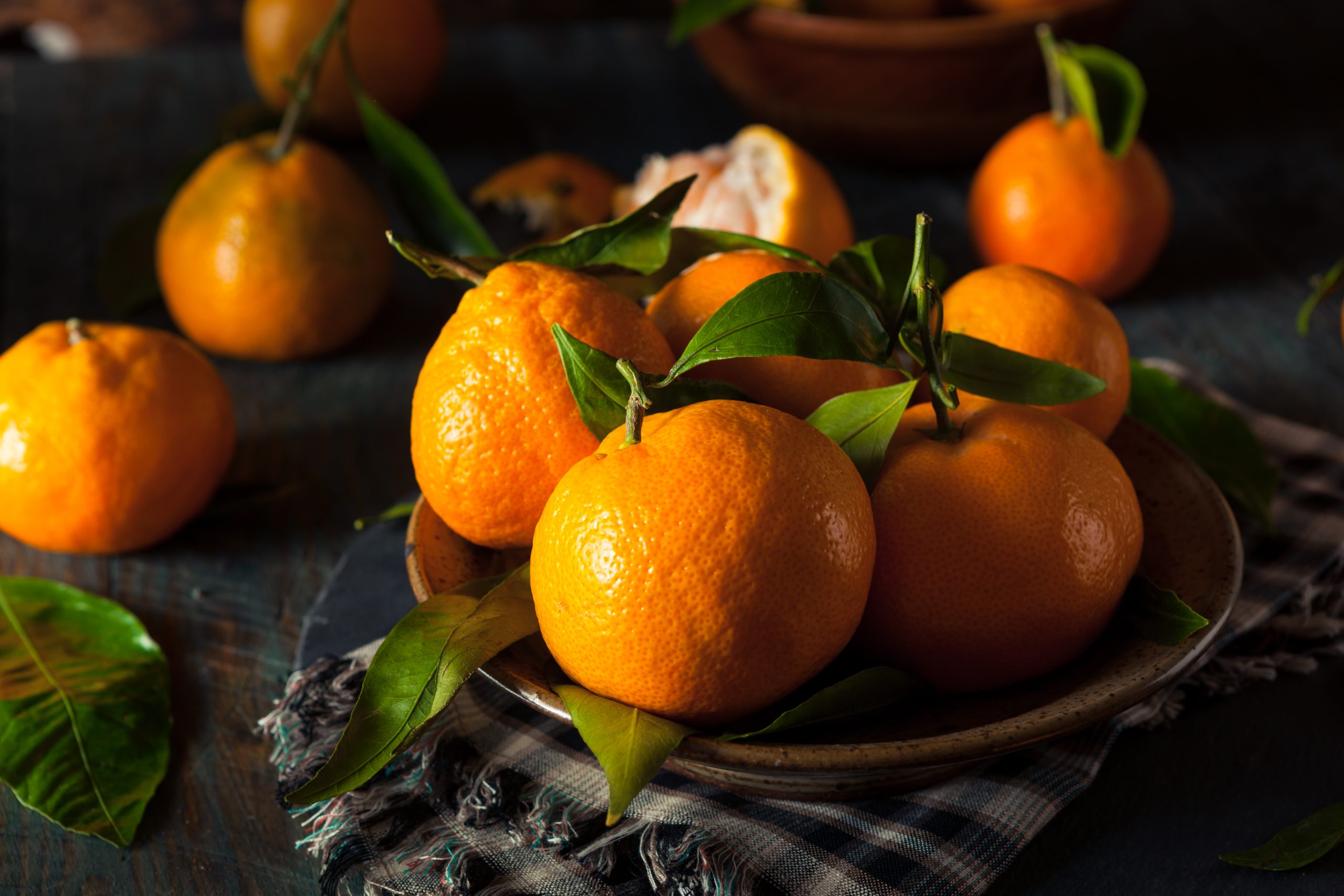The Satsuma mandarin is a member of the mandarin orange family known for its perfectly-balanced sweet and tart flavors. They're similar to clementines, pomelos, or tangerines and are noted for their intense juiciness and seedless flesh.
Table of Contents
What is a Satsuma Mandarin?
Satsuma mandarin, pronounced sat-SU-ma, is a type of mandarin that is native to Japan. It is sometimes referred to as Owari Satsuma Mandarin or Citrus Unshiu and is a member of the Citrus reticulata family. Satsumas are noted for their sweetness, making them the perfect sweet and healthy treat, and it has intensely juicy membranes. Plus, Satsuma mandarins are usually seedless.
At face value, it’s almost impossible to distinguish a Satsuma mandarin from a Clementine. They are both of similar size and shape with a bright orange rind.
However, in tropical climates, the flesh of a Satsuma mandarin doesn’t ripen to an orange color. These perfectly ripe green Satsuma Mandarins are called Emerald Green Satsumas.
Biting into a Satsuma has a rich, honey-like sweetness with minimal acidity, which is why it’s the ideal snack in most of Japan and across the globe.

The History of Satsumas
While this type of mandarin showed up in Japan almost 700 years ago, its origins may go further back than that to China.
Today, it’s one of the most prominent citrus fruits grown on the Island of Japan. The Satsuma mandarin earned its name from the Satsuma province found on the southwest tip of Japan on the island of Kyushu, where they originated.
Today, not only can you find these hidden gems at the grocery store, but Satsuma mandarin trees also thrive in other parts of the globe, especially in Gulf coast states like Florida, Texas, Alabama, and Louisiana. Tangerines and mandarins, like the Satsuma mandarin, make up a large quantity of Japan’s citrus exports.
What Does a Satsuma Mandarin Taste Like?
The best way to enjoy a Satsuma mandarin is raw! It has a thin rind that is easy to peel, just like a Clementine, and has juicy insides. Unlike other citrus fruits, the acid content of Satsuma mandarins is very low. It tastes lovely, almost like honey, with a few sweet potato notes.
The sweet potato taste is thanks to a compound called carotenoids found in both sweet potatoes and Satsuma mandarins.
How to Tell When Satsumas Are Ripe
You can tell the ripeness of a Satsuma by two indicators: color and texture. When a Satsuma is at its peak ripeness, the rind is a beautiful color of orange with no green found on the rind.
Another way to tell if your Satsuma is ripe is to squeeze it gently. If it feels soft, it’s ready to eat.
Are Satsuma Mandarins and Mandarins the Same Thing?
Yes, Satsumas are a variety of mandarins. Mandarins belong to the family known as Citrus reticulata. Citrus fruits belonging to the mandarin family include Clementines, Dancy, Pixie, Honey, tangerines, and the Satsuma mandarin orange.
While they are all a part of the same family, each member of the mandarin family tastes a little different. Satsuma tangerines are one of the sweetest and juiciest members of the mandarin family.
Cooking with Satsuma Mandarins
The best way to enjoy a Satsuma mandarin is raw, but there are many recipes that benefit from the fruit’s flavors. Before you can start cooking with the fruit, knowing how to prepare a Satsuma mandarin is essential.
Thankfully, Satsuma mandarins are easy to peel. Dig into the flesh to find a starting point, and remove the fleshy orange peel, ensuring no pith remains. Once it’s peeled, it’s ready for your favorite recipe.

While you can add them to a simple garden salad for a bit of sweetness, this Satsuma mandarin recipe celebrates this citrus fruit’s flavor. It Incorporates savory additions like basil and a touch of lime dressing that is the perfect side dish.
You can also make a fantastic citrus-inspired smoothie like this kiwi Satsuma green smoothie. It infuses healthy additions of kiwi, banana, yogurt, and Satsuma mandarins.
How to Store Satsumas
If you managed to get your hands on this delicious winter fruit, storing it properly is the key. Sure, they might look pretty left out in your fruit bowl, but they will only last a few days when stored at room temperature.
To keep your Satsuma’s for longer, store them in the refrigerator, ideally in the vegetable crisper. When stored in the fridge, they will last for a few weeks before they start to turn.

Nutritional Benefits of Satsumas
Satsumas typically have between 35-50 calories and are rich in vitamin C. Vitamin C helps boost your immune system, as we all know, but it doesn’t stop there. It also has many other benefits, like increasing collagen production, protecting the body against free radicals, and reducing the risk of certain cancers and heart disease.
Satsumas are also a great source of vitamins and nutrients, such as Vitamin A, potassium, manganese, magnesium, and fiber. Diets rich in fiber, for instance, is excellent for gut health.
Where to Purchase Satsumas
If you live outside of Japan, tracking down Satsumas can be difficult. While some specialty grocery stores or Asian markets carry them, not all do.
Checking local markets at the right time of year may increase the odds of tracking them down. These orange trees harvest in the winter between October and December, so keep your eyes peeled throughout the winter.
Another great place to track down high-quality Satsuma mandarins is also at local farmer’s markets with a wide variety of unique fruits and vegetables.

